calsfoundation@cals.org
McCollum-Chidester House Museum
The McCollum-Chidester House in Camden (Ouachita County) was built in 1847 by Peter McCollum, a North Carolinian who came to Arkansas and acquired the property on a land-grant basis. It is today a museum maintained by the Ouachita County Historical Society.
McCollum purchased the building materials in New Orleans, Louisiana, and had them shipped upriver to Camden by steamboat. It was the first planed lumber house in the area of Ouachita County and possibly in southern Arkansas. It boasted the first plastered walls, carpeting, and wallpaper.
John Chidester, an enterprising stagecoach owner and mail contractor, purchased the home for $10,000 in gold and moved his family to Camden in 1858. Chidester wanted to expand his growing stage line farther west, using Camden as the central headquarters. Moving to Camden from Tuscumbia, Alabama, the Chidesters purchased furniture in New Orleans to outfit their new home. This furniture is still in the home, along with many personal items such as photographs, letters, books, and jewelry. Visitors can see Leah Chidester’s china, silver, linens, and her sewing machine with an 1851 manufacturing date. Pressed-tin window cornices still adorn several rooms.
Chidester’s line spread over the state of Arkansas in an intricate web of routes. He sub-contracted a mail route with the famous Butterfield Overland Mail Company from Fort Smith (Sebastian County) to Memphis, Tennessee. There was a daily run from Hot Springs (Garland County) to Little Rock (Pulaski County), and his stages could go from Camden to Memphis in an unheard-of forty-four hours.
In 1864, Camden was under occupation by the Union army under the leadership of Union General Frederick Steele. Steele commandeered the Chidester home and used the parlor and east bedroom as his headquarters for five days, during which the Engagement at Poison Spring occurred. Chidester was accused of spying for the Confederacy, as he supposedly confiscated Union mail from his stagecoach and turned it over to the Confederate troops. Bullet holes can still be seen in a wall upstairs where Union soldiers fired at random, seeking Chidester, who was hidden in a small closet nearby. He was forced to flee to Texas, where he remained until after the end of the war. He returned to Camden to continue his stagecoach business and operate his livery stable.
The McCollum-Chidester House Museum is now owned and maintained by the Ouachita County Historical Society. It was purchased by the Ouachita County Historical Society in 1963 from the Chidester family descendants, who had continued to live in the house until approximately 1961, and established as a museum. It is presented in the manner and style of the Chidester family as closely as possible. This was made possible through John Chidester’s granddaughter, Annie Leah Chidester Harrell, who lived in the home during the first part of the twentieth century. She kept the oral history and stories of both the McCollum and the Chidester families. The house was listed on the National Register of Historic Places in 1971.
For additional information:
Boyette, Kathy. “The Good, the Bad, & the Ugly: How 172 Years Took Their Toll on Our Beautiful Lady.” Ouachita County Historical Quarterly 51 (Fall 2019): 20–25.
“Celebrating 175 Years of Memories.” Special issue. Ouachita County Historical Quarterly 54 (Fall 2022)
Griggs, Glendle. “History of the McCollum-Chidester House.” Ouachita County Historical Quarterly 51 (Fall 2019): 5–10.
“McCollum-Chidester House.” National Register of Historic Places nomination form. On file at Arkansas Historic Preservation Program, Little Rock, Arkansas. Online at http://www.arkansaspreservation.com/National-Register-Listings/PDF/OU0045.nr.pdf (accessed February 9, 2023).
“McCollum-Chidester House Museum.” Special issue. Ouachita County Historical Quarterly 51 (Fall 2019).
Ouachita County Historical Society. http://www.ouachitacountyhistoricalsociety.org/ (accessed February 9, 2023).
Clara Freeland
Ouachita County Historical Society
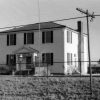

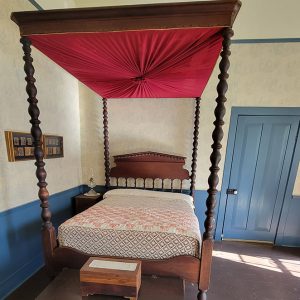 Bedroom Display
Bedroom Display 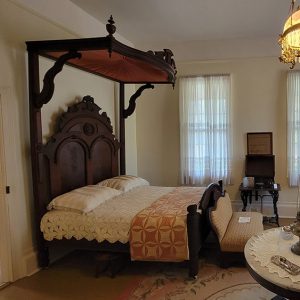 Bedroom Display
Bedroom Display 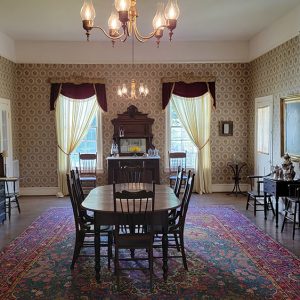 Dining Room Display
Dining Room Display 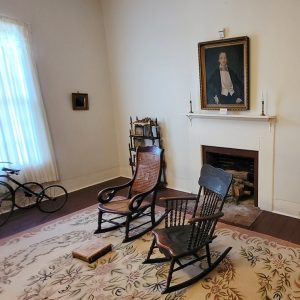 Furnishings and Fireplace Display
Furnishings and Fireplace Display  Grapette Display
Grapette Display 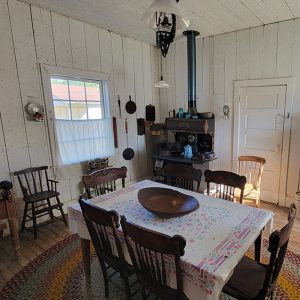 Kitchen Display
Kitchen Display  Leake-Ingham Building
Leake-Ingham Building  Leake-Ingham Building Sign
Leake-Ingham Building Sign 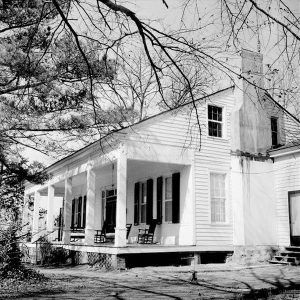 McCollum-Chidester House
McCollum-Chidester House  McCollum-Chidester House Museum
McCollum-Chidester House Museum 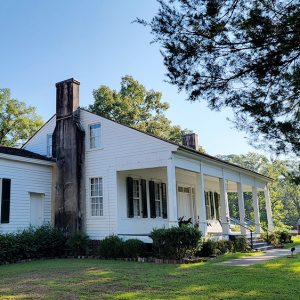 McCollum-Chidester House Museum
McCollum-Chidester House Museum  Peter McCollum
Peter McCollum  Nursery Display
Nursery Display  Original Wallpaper
Original Wallpaper 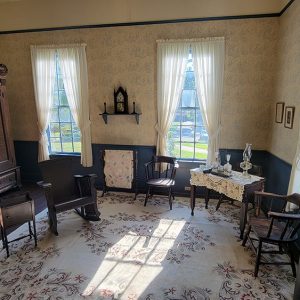 Parlor Display
Parlor Display 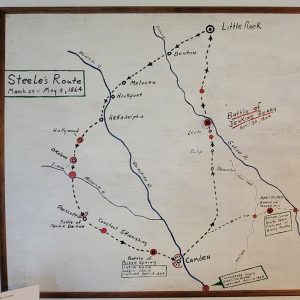 Steele's Routes
Steele's Routes 



This is my family’s house. My name is on the family tree, and my grandma slept on the trundle bed. It is so beautiful and well kept. I can’t wait to bring my family to see it one day. I haven’t been there since 1994. Thank you to all who maintain it.
To address my grandfather in the mirror: If you look at the photo first taken there, which I believe they show during tours, look at the coat bottom and the rug and the floor. They are a different color than the floor not in the mirror. I don’t know if that made sense, but my grandmother said most of the family stayed and roamed that house…
When I went, I read my great-great-aunt’s journal where she talked about a bridge Chidester who had passed and they didn’t know where, but in the green journal there was a newspaper article speaking of her death in San Francisco. My Aunt Puddin could never find the clipping. She actually went back to read the journal and nothing I read was in there according to her. She and I thought it was very strange. Those are my little stories. I hope you enjoy visiting and get to see all the beauty.
I visited this house over a decade ago. I had heard rumors that there was a ghost of a Yankee soldier in the bedroom dresser mirror. I took a picture to see if it was true. All I got was a reflection of myself in the photo.